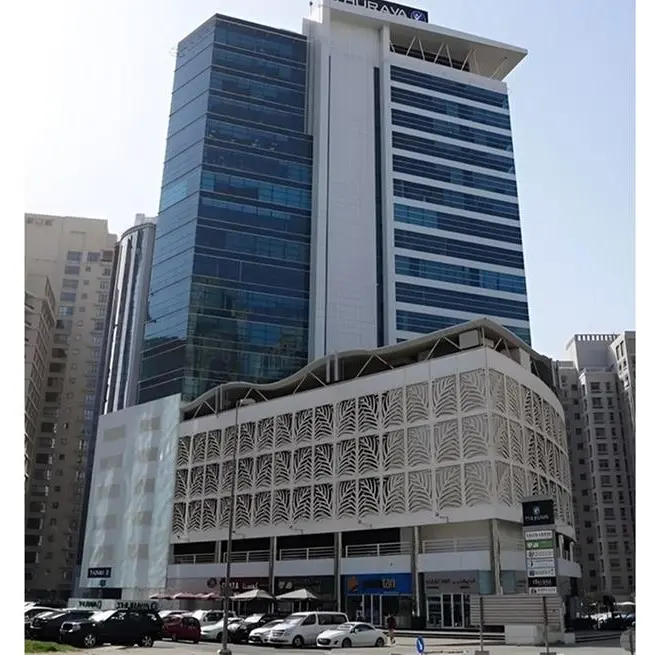PHOTO
But not before current turmoil forces the mid-market to reevaluate their business models
Dubai - February 7, 2016 - Retail sales of diamond jewelry grew in 2014 and in the first half of 2015 by 4 to 8 percent with solid performance from the U.S. Meanwhile, the Chinese market continues to slow, due to stagnant GDP growth - a risk we predicted previously - which caused a ripple effect across the entire value chain. In 2015, diamond producers and mid-segment companies should anticipate a 10-20 percent decrease in revenue with diamond jewelry sales to remain near flat. These are the findings from the fifth annual report, The Global Diamond Industry 2015: Growth perspectives amid short-term challenges, released today by Bain & Company and the Antwerp World Diamond Centre (AWDC).
The mild decline in consumer demand for diamond jewelry began in 2014 in Greater China and led to a notable drop in demand for polished and rough diamonds in 2015. This, in turn, forced retailers there to trim orders for polished diamonds, creating an inventory backlog in the cutting and polishing segment. As a result, prices for polished and rough diamonds plunged 12 percent and 23 percent, respectively, since May 2014 and 8 percent and 15 percent, respectively, for the first nine months of 2015. The long-term outlook remains robust as Bain expects macroeconomic fundamentals to remain positive, with prices likely to rebound similar to previous downturns.
"Following the economic turmoil of 2001 and 2009, prices took 18 to 24 months to recover," said Olya Linde, lead author of the global diamond industry report and a Bain partner. "This time, we anticipate the market has the potential to recover much quicker - within just 1 to 2 years - assuming rough-diamond producers and polished-diamond manufacturers closely monitor and manage their supply levels. This will go a long way toward helping accumulated stocks work their way through the system efficiently."
"Hard luxury represents as much as 30 percent of the GCC luxury goods market. It is a EUR2.3Bn market of which fine jewelry accounts for a third. The GCC jewelry retail market has performed better than other luxury goods categories in 2015, due to a lower sensitivity to non-GCC tourists" said Cyrille Fabre, partner and head of Bain's Retail and Consumer Products Practice in the Middle East.
Additional findings in the report reveal a somewhat turbulent year for the rough-diamond market in 2014 and 2015. Rough-diamond revenues grew 8 percent last year on the strength of increased sales by the top five producers and despite a decline in the overall volume of carats mined. During that same time, rough-diamond production volume fell by 4 percent globally to slightly less than 125 million carats, with the largest drops occurring in Australia and Africa.
On the other hand, cutting and polishing revenue continued its positive trajectory last year with growth in the mid-single digits, due in large part to India and China. Together, they now represent about 80 percent of the market. In contrast, Africa's cutting and polishing market declined dramatically, despite efforts to turn the tide by the governments of Botswana, Namibia and South Africa - countries that have not yet become competitive in terms of manufacturing efficiency and skilled labor. Elsewhere, countries focused on high-end stones, such as the U.S. and Belgium, recorded declines in polished revenue as volumes of large stones migrated to India. The country now cuts and polishes more than 40 percent of the world's diamonds larger than 1 carat with quality standards comparable to those of developed markets.
As in past years, the industry continues to face challenges - most notably that mid-market companies are being forced to reevaluate their business models amid industry turbulence and continuing pressure on the market.
"At the moment, the mid-market segment is just too weak to cushion against short-term fluctuations in the diamond jewelry retail market," said Linde. "Though it has little bargaining power over rough producers and limited access to financing, mid-market players still bear the brunt of price volatility, but this is not a life sentence. We expect their continued development will allow the industry to implement more sustainable business models over time."
In addition, somewhat flat consumer demand in 2014 and 2015 shines a light on the industry's long-standing challenge of sustaining enduring demand for diamonds. Bain's recent research on the luxury industry reveals that consumer attitudes toward luxury overall are changing, particularly in Europe, the U.S., and Japan. Further, little is known about the diamond consumption patterns of the new generation of consumers. Finally, the industry is still struggling to boost investment demand for diamonds. All of these considerations are further challenged by the ongoing penetration of undisclosed synthetics that can undermine consumer confidence.
Ari Epstein, CEO of the Antwerp World Diamond Centre: "This report confirms just how challenging the past year has been for the global diamond industry, but we must not lose sight of the fact that steps are already being taken to bring the system back into balance. While we have witnessed slow economic growth in the Far East impacting consumer demand, we have also seen continued robust U.S. market performance. The U.S. has always been the main driver of diamond consumption and is still going strong. And while the industry as a whole responded too ambitiously to exponential growth in Chinese and Indian demand in recent years, the current slowdown in those countries in no way implies long-term stagnation. The entire pipeline is now recalibrating its output and prices to adjust to somewhat lower growth forecasts. Furthermore, the measures the major miners have taken in response to the needs of the midstream, together with initiatives to stimulate demand for polished diamonds, should bring the pipeline back into balance. Every indicator points to a recovery starting mid-2016. We remain confident in the long-term prospects for the diamond industry."
Looking ahead, Bain's proprietary forecasting method anticipates rough-diamond demand will grow at an annual rate of about 3-4 percent over the next 15 years. Meanwhile, the aging and depletion of existing mines and relatively little new supply coming online, will eat into supply by 1-2 percent per year from 2015 to 2030, causing the gap between supply and demand to widen starting in 2019. Despite an anticipated slow-down due to weaker economic growth and slowing expansion of the middle and upper classes, the Chinese market will likely stay flat in 2016 before an anticipated recovery in 2017 that is expected to lead to 4-5.5 percent annual growth through 2030. This projection is down from about 7 percent in previous Bain forecasts.
About Bain & Company
Bain & Company is the management consulting firm that the world's business leaders come to when they want results. Bain advises clients on strategy, operations, technology, organization, private equity and mergers and acquisition, developing practical insights that clients act on and transferring skills that make change stick. The firm aligns its incentives with clients by linking its fees to their results. Bain clients have outperformed the stock market 4 to 1. Founded in 1973, Bain has 53 offices in 34 countries, and its deep expertise and client roster cross every industry and economic sector. For more information visit: www.bain.com. Follow us on Twitter @BainMiddleEast.
For further information, please contact:
Orient Planet PR & Marketing Communications
P.O Box: 500266
Dubai, United Arab Emirates
Tel: 00971 4 4562888
Email: media@orientplanet.com
Website: www.orientplanet.com
© Press Release 2016




















